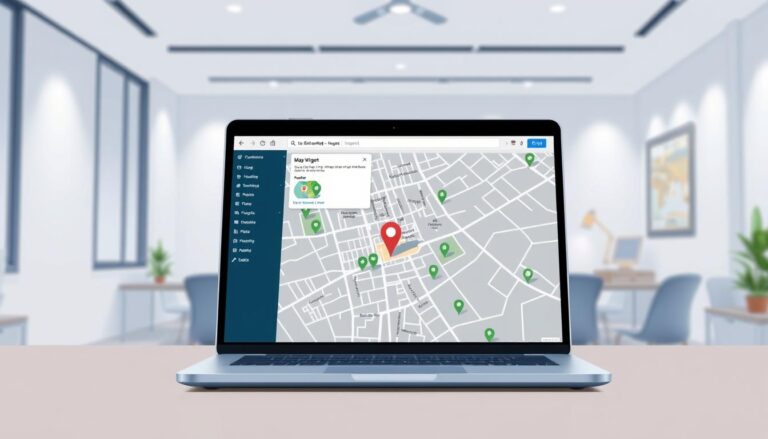Managing multiple business locations is tough. It needs smart planning, smooth operations, and strong leadership. As a business owner, making sure each location works well is key to success.
With the right strategy, you can handle multiple locations well. Good business management ensures everything runs smoothly at all sites.
Key Takeaways
- Understand the challenges of managing multiple sites
- Develop a strategic plan for effective operations
- Implement efficient systems for streamlined management
- Foster strong leadership across all locations
- Monitor performance to achieve business objectives
Understanding the Challenges of Multiple Business Location Operations
Running multiple locations can be tough. It comes with its own set of challenges. Managing these locations well requires a deep understanding of the operational, managerial, and financial aspects.
Identifying Common Management Pain Points
Managing many locations has its own set of pain points. These include keeping things consistent, managing inventory and supply chains, and making sure teams communicate well. Some major challenges are:
- Maintaining brand consistency across different locations
- Managing and optimizing inventory levels
- Coordinating supply chain operations
- Ensuring effective communication and collaboration among teams
These issues can be big, and solving them needs a detailed plan. This plan must consider the special needs of each location.
Measuring the Impact on Business Performance
The effects of these challenges on business performance can be big. For example, if branding is not consistent, it can hurt customer trust. Also, if inventory management is off, it can lead to stockouts or overstocking. To see how these challenges affect performance, businesses can look at certain KPIs like:
- Sales revenue per location
- Customer satisfaction ratings
- Inventory turnover rates
- Employee productivity levels
By watching these KPIs, businesses can spot where they need to get better. They can then work on improving those areas. This helps boost their overall performance.

Creating a Unified Strategy for Multiple Business Locations
Managing multiple business locations requires a unified strategy to drive growth. As a business owner, I know the value of a cohesive plan. It aligns all locations and ensures consistent operations.
Establishing Consistent Brand Standards
To have a unified brand image, setting consistent brand standards is key. This means creating visual identity guidelines for logos, colors, and fonts.
Visual Identity Guidelines
Visual identity guidelines are vital for a consistent brand image. They outline how logos, colors, and fonts should be used. This ensures all marketing and customer interactions are consistent.
Customer Experience Protocols
It’s also important to have customer experience protocols for a unified customer experience. These protocols should cover customer service, returns, and complaints handling. This way, every customer has a similar experience, no matter the location.
Centralizing Core Business Functions
Centralizing finance and HR can streamline operations and boost efficiency. A centralized system cuts costs, improves compliance, and aids in decision-making.
Balancing Corporate Control with Local Autonomy
Centralizing core functions is important, but so is balancing corporate control with local autonomy. This lets each location adapt to local markets and customer needs. It keeps the business competitive and flexible.
By finding the right balance, businesses can develop a unified strategy. This strategy drives growth and success across all locations.
Essential Technology Solutions for Multiple Business Location Management
Companies with many locations need strong technology to stay efficient. Good tech helps manage operations, team work, and understand how each place is doing.
Cloud-Based Management Systems
Cloud systems are key to managing everything from one place. They let you watch and control your business in real time. This includes things like stock and customer service.
- Enhanced data accessibility
- Improved collaboration among teams
- Scalability to accommodate business growth
Streamlining Inventory and Supply Chain
It’s important to make inventory and supply chain work better. This cuts costs and makes deliveries faster. With tech, you can manage stock and supply chain better.
Key benefits include:
- Reduced inventory holding costs
- Improved supply chain visibility
- Enhanced customer satisfaction through timely deliveries
Communication and Collaboration Platforms
Good tech for talking and working together is essential. It helps share info, plan tasks, and keep everyone’s goals in line.

Data Analytics for Location-Specific Insights
Using data analytics is key for insights that help make decisions. It lets you see trends, chances, and challenges in each place. This helps grow and improve your business.
- Location-specific performance analysis
- Data-driven decision making
- Identification of best practices and areas for improvement
By using these tech solutions, businesses can work better and improve across all locations.
Building Strong Teams Across Multiple Business Locations
Building a strong team is key for businesses with many locations to succeed. Managing multiple locations shows that a united team is essential for success.
Developing Location-Specific Hiring Strategies
To build a strong team, I must create hiring plans for each location. This means knowing the local market, finding the right talent, and making a recruitment process that draws top candidates.
Key considerations for location-specific hiring include:
- Understanding local market conditions and talent availability
- Tailoring job descriptions to appeal to local candidates
- Utilizing local recruitment channels and job boards
Creating Standardized Training Programs
After hiring the right people, it’s important to train them well. Standard training ensures everyone meets high standards, no matter where they are. This way, all employees have the same knowledge and skills.
Effective training programs should include:
- Comprehensive onboarding processes
- Regular updates on company policies and procedures
- Ongoing skill development opportunities
Fostering a Unified Company Culture
A unified company culture is essential for teamwork across locations. I do this by promoting communication, shared values, and a sense of belonging among employees.
Strategies for fostering a unified culture include:
- Regular team-building activities and events
- Clear communication of company values and mission
- Encouraging feedback and suggestions from employees
Implementing Effective Leadership Models
Good leadership is vital for success and employee engagement across locations. I use leadership models that empower local leaders while keeping the overall strategy in check.
Key elements of effective leadership models include:
- Decentralized decision-making with clear guidelines
- Regular performance monitoring and feedback
- Leadership development programs for local managers
Taking Your Multi-Location Business to the Next Level
Managing a multi-location business is a big task. It needs good planning, smooth operations, and strong leadership. With a unified strategy, technology, and a great team, you can beat the challenges and grow your business.
A solid business strategy is key to success. It means setting up consistent brand standards and centralizing important functions. This balance helps improve efficiency, customer happiness, and boosts sales.
Look into new technologies and best practices to stay competitive. Keep working on your strategy and operations. This way, you can keep growing and reach new heights with your business.










